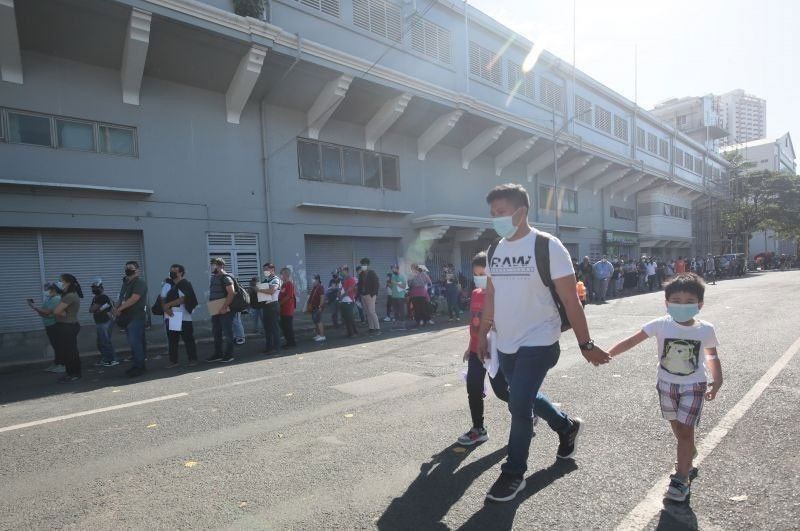Alert Level 1? New status known today

MANILA, Philippines — Whether or not the Philippines is set for a “new normal” this month may be known today as the government announces the updated alert levels throughout the country, amid a decline in COVID-19 infections.
In a text message to reporters yesterday, acting presidential spokesman Karlo Nograles said the announcement of the alert level classifications would be made “after noontime tomorrow (Feb. 14).”
Interior Secretary Eduardo Año confirmed that the alert status shift would be discussed by the Inter-Agency Task Force for the Management of Emerging Infectious Diseases (IATF) today.
Año said the decision would depend on the Technical Working Group (TWG)’s findings and recommendations from the regions. The new alert levels will be enforced from Feb. 16 to 28.
The Department of Health (DOH) reported late last week that all Philippine regions, except Soccsksargen, were at low to moderate risk for COVID-19, an indication that the number of new infections continues to decrease.
The number of new infections averaged 6,103 this week, down from more than 10,000 over the previous weeks, which saw a surge in cases caused by the Omicron variant. Yesterday, it went further down to 3,050.
While the government continues to record thousands of newly reported cases per day, the national health system capacity remains at low risk, a trend tied to vaccination efforts.
The OCTA Research group has said that Metro Manila is now classified as low risk because of a lower COVID-19 reproduction rate, positivity rate, and average daily attack rate (ADAR) or the number of new infections per 100,000 population.
The DOH has disputed this, saying Metro Manila is still at moderate risk based on its own metrics. The capital region recently posted a daily attack rate of 12.53 and a seven-day moving average of 886 per day, the agency has said.
Metro Manila, the country’s economic center, is under Alert Level 2 until Feb. 15.
Metro Manila mayors have expressed readiness to open more sectors and businesses once the region’s status is relaxed to the most lenient Alert Level 1 – loosely classified as the “new normal.”
But some health experts think it is premature to place Metro Manila under Alert Level 1 this month because the number of infections is still high.
Even the Department of the Interior and Local Government (DILG) cautioned against an Alert Level 1 transition, saying a case surge emerging from eased restrictions and increased mobility may overwhelm the hospital utilization rate in Metro Manila.
“While we understand the sentiments of the economic sector that wants to recover their losses during heightened restrictions, of course we also want that but we need to make things gradual so that we won’t regret anything,” said Año.
Apart from Metro Manila, Batanes, Bulacan, Cavite, Rizal, Biliran, Southern Leyte and Basilan are among the places previously downgraded to Alert Level 2 until tomorrow.
Health Undersecretary Maria Rosario Vergeire has said that restrictions under Alert Level 1 will be “very specific” and will only be implemented in situations where there is a high level of infection.
Under Alert Level 1, intrazonal and interzonal travel will be permitted regardless of age and comorbidities. All establishments, persons, or activities may operate, work, or be undertaken at full on-site or venue or seating capacity as long as minimum public health standards are observed.
But the DILG chief said it would be safer to wait until the National Capital Region (NCR)’s ADAR is at least in the range of 7 and below. At present, the attack rate in the region is at 10.8.
Año’s opinion, which he raised in an interview with dzBB yesterday, factors in the scenario in the weeks ahead when campaign sorties and other election-related events are bound to draw crowds.
“In the next few days, we still need to be on guard because we all know that while the elections are drawing closer, the campaigns are getting more aggressive especially when the local election period commences,” he said, noting this may lead to another surge. – Neil Jayson Servallos
- Latest
- Trending





























